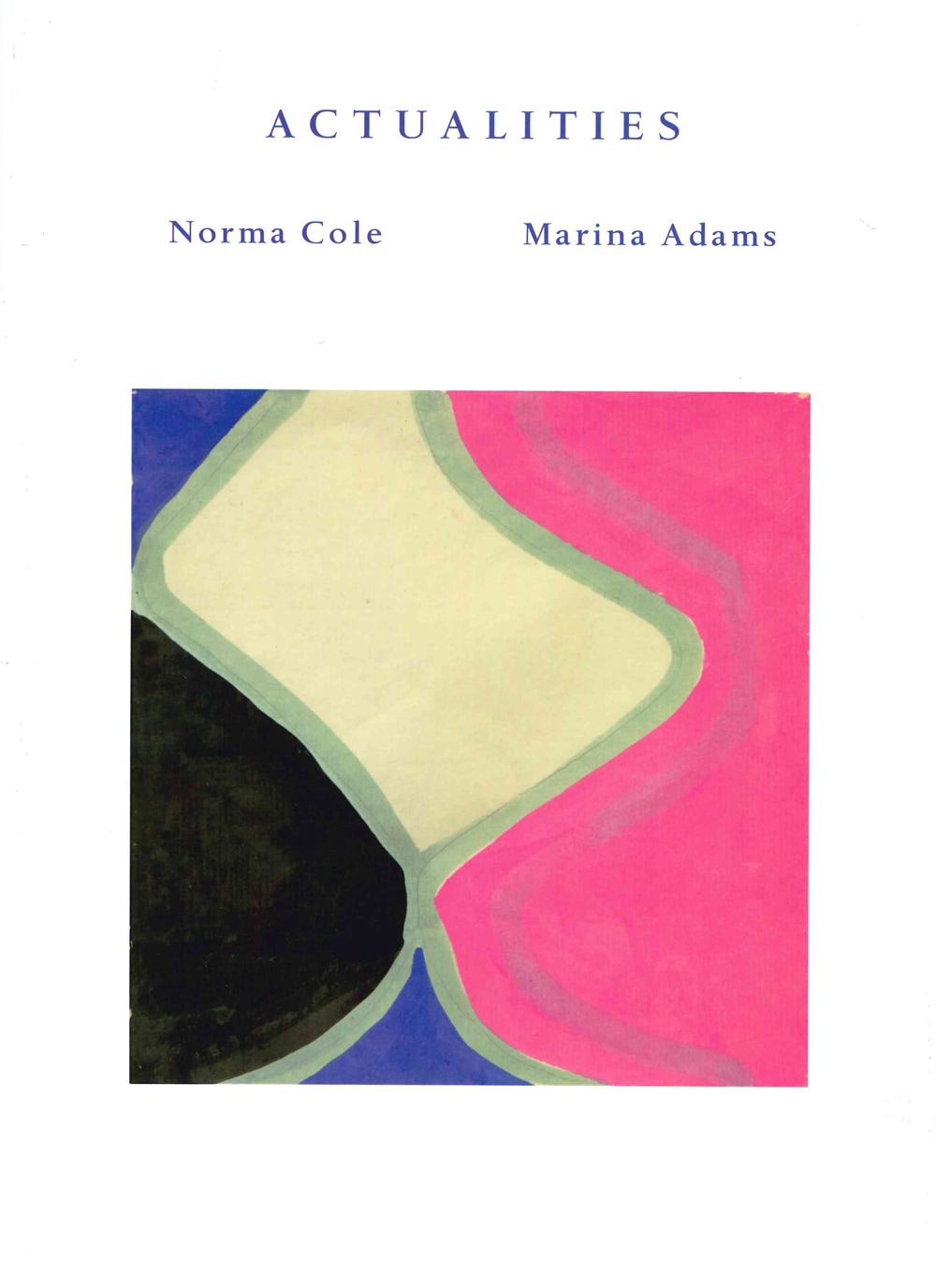|
Actualities by Norma Cole and Marina Adams (Litmus Press, 2015)
Review by Greg Bem (@gregbem) On the periphery: Didn’t It Rain by Songs: Ohia a woman looks at the toe of her boot inventing the present (from “The Dream I Had Ended”) In the collaboration notes at the back of Actualities, both Norma Cole (the contributor of poetry to the book) and Marina Adams (contributor of visual art) discuss ideas of being. Cole references the startling quality behind Adams’s work, and “startling” may be the perfect way to describe the book. Within are peaks and glances, emerges and submerges, echoes of experience, and drips and drops of engagement with the world, but outside of the flow of the book itself, a lack of stability and consistency allows the book to startle, and startle again. The effects are surprising and enjoyable. Red flowers on our left, his right, in the background, some apples and green grapes. “That’s not why you sent me here.” The book is a large format for poetry, with engorged fonts and visual smatterings. Cole’s writing is often (though not always) sparse and concise, occasionally delicate and occasionally pointed, and the effect of seeing such language is one of enveloping presence. When paired with the line drawings and greater, colorful paint smears from Adams, the effect brings forward additional startles: emotion is an intricate weave of push and pull, paper lift and nudge, pupils dilating and constricting. As the visuals often feel like they are serving as buffers, medians, or padding, there is a sense of containment within that fulfillment of flow. The poems, which are each uniquely constructed and offer limitless paradigms, thus feel contained and isolated for greater accessibility. Cole’s language benefits from such structures and support mechanisms; the collaboration transforms what would otherwise be a scatter of ideas and images and moments of experience, and disconnected beauty sent into a channel, funnel, or pathway. Though Cole’s writing is unforgivingly vague, and, despite roots through epigraphs and locales, challengingly mysterious, the thorough splicing creates a generally enjoyable poetic experience. a a crystal of resistance mountain of desire A closer examination reveals Cole’s deep concern and reverence for transcription of space and the things that inhabit it, which is an appropriate extension of the exploration of being. What is “to be” within the world is accentuated through an exploration of things transitory through travel, exotic through discovery, and often very specific. The sense and tone of the personal wraps each poem up quite neatly despite the fleeting quality of these works. Indeed, the level of personable reflection makes these works almost feel like a day book, though where they are being written and when is left to the reader’s imagination. Throughout Actualities at key, pivotal moments, the concept of being is explored directly. When Cole speaks “materiality of language / & / defamiliarization” (in “Roger One”), and it is paired with Adams’s textured-while-abstracted streaks of turquoise, magenta, orange, purple, green, black, and white, an unlocking effect occurs. It appears like the book is formed out of the tools and materials of language (and poetry) itself, and yet there is a certain degree of distance from it. And yet, oddly too, I would not describe the effect of this writing as “ethereal” or “transparent” or “ghostly.” The use of the language is very tactile, enduring, and openly visible. Perhaps Cole writes “defamiliarization” as a form of loss or disconnect between the act of the poem’s creation and the resemblance of it after the act has been completed. What is that boat behind you? Just the moon. Stars’ gaze. Not the moon. A clock face. An hour a month. (from “In Myriad Store”) In this book, there are problems and there are solutions, and the exploration of the actualities of life, of the building blocks of existence, are touched upon with grace. And yet beneath all the ideas, there are strong poems waiting to be read just as poems, as the visual art sits and plays throughout as something pleasing to look at without significant analysis. The power of the book to make itself casual is perhaps the hidden power, the hidden beauty, in an otherwise complicated work. Perhaps this book in all its collaborative angles is a lesson to take lightly more artistry that we pass by in our lives, for more diverse understanding and enjoyment.
0 Comments
Your comment will be posted after it is approved.
Leave a Reply. |
Welcome to Yellow Rabbits. Thanks for visiting.
All reviews by Greg Bem unless marked otherwise.
SearchYellow Rabbits Reviews
Archives by Month
August 2019
|

